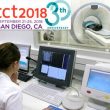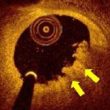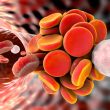1- High-Sensitivity Troponins Turned All Events into Infarctions; the 4th Universal Definition Clarifies Things Myocardial infarction or myocardial injury? The Fourth Universal Definition of Myocardial Infarction (an update of the 2012 version) is here to clarify that not all cases of elevated cardiac troponin values are acute myocardial infarctions. Read more 2- A Simple<a href="https://solaci.org/en/2018/10/09/the-10-most-read-articles-of-september/" title="Read more" >...</a>
TCT 2018 | SYNTAXES: 10 Year Follow Up is ‘Trendy’
The SYNTAX trial had a 5-year follow-up, but the SYNTAXES (“ES” for extended survival) was specifically designed to find out comparative mortality of both treatments (PCI or surgery) at 10 years in patients with three vessel and/or left main lesions. This study retrospectively compared survival data at long term of 897 patients randomized to surgery<a href="https://solaci.org/en/2018/10/05/tct-2018-syntaxes-10-year-follow-up-is-trendy/" title="Read more" >...</a>
Antiaggregation Time after Treating Bifurcations
Defining dual antiplatelet therapy (DAPT) seems a never-ending story. We go from trials showing the safety of shorter schemes thanks to new generation stents to others suggesting up to two years of DAPT. Rather than finding a general scheme, it seems to be about adjusting DAPT on a case by case basis, according to ischemia<a href="https://solaci.org/en/2018/09/06/antiaggregation-time-after-treating-bifurcations/" title="Read more" >...</a>
Silent Diabetes Is the New Stealthy Enemy
One in three “nondiabetic” patients who undergo angioplasty with current drug-eluting stents have an altered glucose metabolism, which is associated with a 4-fold higher risk of events, according to a study that will be published soon in JACC Intv. One in three patients is definitely one patient too many, and four times higher is definitely<a href="https://solaci.org/en/2018/03/20/silent-diabetes-is-the-new-stealthy-enemy/" title="Read more" >...</a>
OCT Follow-Up of Plaque Erosion with Medical Therapy and Without Stenting
Most acute coronary syndromes (ACS) are caused by the following three different pathologies: Plaque rupture Plaque erosion Calcified nodule In daily clinical practice, all patients who experience them are treated with angioplasty, regardless of which of these physiopathologies led to the ACS in each case. Some early reports indicate that patients with plaque erosion might<a href="https://solaci.org/en/2018/01/25/oct-follow-up-of-plaque-erosion-with-medical-therapy-and-without-stenting/" title="Read more" >...</a>
Ischemic and Bleeding Risk After Primary Angioplasty
Patients with ST-segment elevation myocardial infarction who undergo primary angioplasty are at high risk for both ischemic and bleeding events, which affect significantly both morbidity and mortality. An optimal selection of antithrombotic therapies in terms of strength and duration must take into account the timing for the procedure, since the risk for these complications may<a href="https://solaci.org/en/2017/11/22/ischemic-and-bleeding-risk-after-primary-angioplasty/" title="Read more" >...</a>
2.0-mm DES for Very Small Vessels: Are They Viable?
The reference vessel diameter is a fundamental factor for restenosis after coronary angioplasty even with drug-eluting stents. The smallest sized stents available are 2.25 mm in diameter, but even smaller vessels can be symptomatic. This was a prospective multicenter trial of the Resolute Onyx 2.0-mm zotarolimus-eluting stent. The primary endpoint was target lesion failure. Read also: “Effects<a href="https://solaci.org/en/2017/10/25/2-0-mm-des-for-very-small-vessels-are-they-viable/" title="Read more" >...</a>
See All ProEducar “José Gabay” Course (Eighth Edition) Presentations
We are deeply thankful to all interventional physicians who, motivated by their great scientific and educational vocation, presented their works at the “José Gabay” Course and actively collaborated in training and providing updated concepts for the next generations of interventional cardiologists. Read and/or download the presentations below: Module I: Fundamentals and Basic Elements. Álvarez, José.<a href="https://solaci.org/en/2017/08/22/see-all-proeducar-jose-gabay-course-eighth-edition-presentations/" title="Read more" >...</a>
Successful CTO reduces local and remote residual ischemia
Courtesy of Dr. Carlos Fava. The presence of Chronic Total Occlusion (CTO) is about 30%, with an ischemic threshold between 10% and 12.5% to justify rechannelization. Using the new devices, the new guidelines and with more experience operators, these procedures are successful in 10% to 30% of cases. More often than not these patients are not treated<a href="https://solaci.org/en/2017/07/19/successful-cto-reduces-local-and-remote-residual-ischemia/" title="Read more" >...</a>
Post DES Dual Antiplatelet Therapy Still under Debate
The NIPPON trial (Nobori Dual Antiplatelet Therapy as Appropriate Duration) was a randomized study comparing a short dual antiplatelet therapy scheme (6 months) vs. a prolonged scheme (18 months) in patients receiving the Nobori drug eluting stent (Terumo, Tokyo, Japan) with a biodegradable abluminal polymer. It included 3,773 patients with chronic stable angina or acute coronary<a href="https://solaci.org/en/2017/07/18/post-des-dual-antiplatelet-therapy-still-under-debate/" title="Read more" >...</a>









